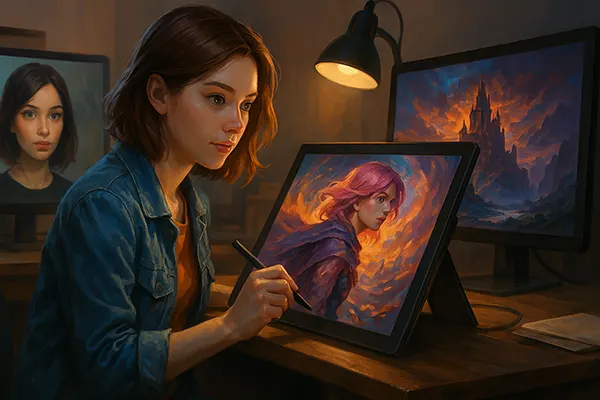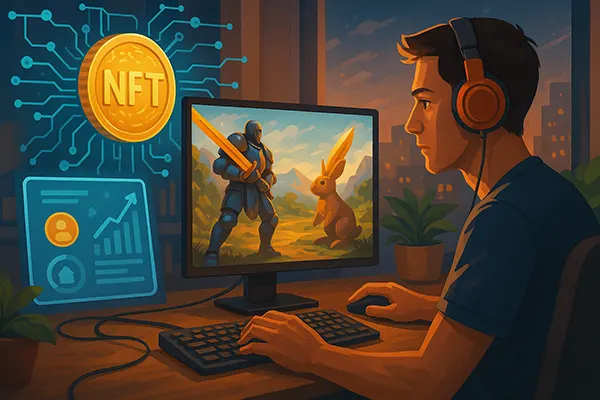
How to Make Money Creating AI-Generated Digital Avatars and Covers
As AI art platforms continue to rise in popularity, more people are discovering new ways to earn money by producing stunning visual content. With tools like Midjourney, DALL·E, and Leonardo AI, creators can now generate professional-quality digital avatars and eye-catching cover art that sell. This article explores practical strategies to turn your creativity into income in 2025.
Monetising AI-Generated Avatars in Freelance Markets
Freelance platforms such as Fiverr, Upwork, and Etsy have experienced a sharp increase in demand for custom avatars in recent years. These avatars serve various needs — from social media profiles to gaming, branding, and even corporate presentations. Midjourney and Leonardo AI, in particular, allow for artistic control and highly detailed imagery that rivals human-made designs. As of February 2025, top-rated sellers in this niche charge between £30 and £150 per avatar bundle, depending on complexity and delivery time.
Success in this market largely depends on portfolio quality and niche targeting. Instead of offering general avatar design, consider focusing on VTuber avatars, anime-style portraits, or corporate headshots. These subcategories attract different audiences and allow for tailored marketing efforts. Offering a few styles upfront helps establish credibility and meet diverse client preferences.
Another key factor is communication. Clear instructions, fast revisions, and consistent branding (such as including your AI method in your gig description) help build trust. Buyers who understand your process are more likely to return and recommend your services to others.
Optimising the Creative Workflow with AI Tools
AI platforms like DALL·E 3 and Leonardo now offer advanced prompt customisation, allowing creators to fine-tune their outputs. When paired with tools such as Photoshop or Canva Pro, the post-editing process becomes quicker and cleaner. This hybrid workflow not only ensures originality but also enhances the visual quality of the final image, which is essential for professional use.
Automation helps maximise volume and revenue. With pre-built prompt templates, you can generate consistent styles faster and meet client demands with ease. For example, you might design 10 avatars in a single hour using Midjourney’s turbo plan, then post-process them for presentation and delivery. This scalability is perfect for growing your income without sacrificing quality.
To stay ahead, keep track of new AI model updates and explore niche subreddits, Discord groups, or AI art communities. These often share new prompt ideas and inspiration, giving you a competitive edge in both style and approach.
Selling Digital Covers for eBooks, Music, and YouTube
In 2025, digital covers remain a hot commodity across multiple platforms. Self-publishing authors, indie musicians, and YouTubers constantly seek original cover art to enhance their content’s visual identity. Using AI tools to meet this demand not only saves time but also allows for affordable, fast delivery at scale. Sellers typically price covers between £40 and £200 based on customisation levels and licensing rights.
Midjourney’s high-resolution outputs are ideal for book covers and streaming thumbnails. Combined with text overlays and basic formatting in Canva or Photoshop, AI art can be made platform-ready within minutes. For artists specialising in fantasy, sci-fi, horror, or thriller genres, DALL·E’s surreal aesthetics are a perfect match.
Licensing is an important topic. Ensure your generated content complies with commercial use rights. Midjourney and DALL·E, when used under paid plans, grant users commercial rights, but it’s always advisable to read updated terms. For each project, clarify usage rights in writing with your client or via platform T&Cs.
Targeting Niche Audiences with Smart Marketing
Instead of competing in crowded design categories, focus on underserved niches. For example, children’s book authors often struggle to find colourful, unique covers on a budget. By tailoring your portfolio to their needs and keywords, you can stand out. The same applies to YouTubers producing podcast or gaming content — custom thumbnails or covers give their channel a distinct visual identity.
Social media marketing is crucial. Share before-and-after examples, behind-the-scenes process videos, and client testimonials across Instagram, TikTok, and LinkedIn. Use relevant hashtags such as #AIartcover, #ebookdesign, or #YouTubebranding to attract the right audience. Include links to your storefront or contact forms in bio descriptions.
To further increase visibility, consider collaborating with influencers or joining AI art contests. These generate exposure, backlinks, and social proof, helping build your reputation as a reliable AI cover designer.

Establishing Your Own AI Art Brand
Building a personal brand around your AI art increases trust, pricing power, and long-term stability. Many successful creators in 2025 combine social proof, storytelling, and consistency to market their services. You can build your brand identity via a portfolio website, a content blog, and regular social engagement. Platforms like Notion, Framer, or WordPress make it simple to launch a clean, responsive site without heavy coding skills.
Your branding should reflect your design focus. Use a consistent visual style, colour palette, and voice. Add client case studies, AI model disclaimers, and behind-the-scenes content to show transparency and value. Testimonials, before-and-after comparisons, and optional tutorials also add credibility.
For monetisation beyond one-off sales, consider selling prompt bundles, offering subscriptions for regular content drops, or launching an AI art course. You could also host live streams on Twitch or YouTube explaining your design process, monetising through ads, donations, and affiliate links.
Staying Compliant and Ethical in the AI Economy
With growing concerns about authenticity and copyright, staying transparent about AI use is not just ethical—it’s a competitive advantage. In your profiles, product listings, and contracts, disclose that the artwork is AI-assisted. Doing so builds client trust and protects you from legal disputes.
Ethical creators also avoid using AI to replicate or clone real artists’ styles without permission. Platforms like Midjourney prohibit this in their terms, and clients appreciate originality more than mimicry. Focus on crafting unique, transformative designs that reflect your vision rather than copying someone else’s.
Finally, always stay informed. The AI art landscape changes rapidly, and new laws may regulate how creators use and distribute machine-generated content. Regularly check updates from AI tool providers and creative rights organisations to keep your business safe and sustainable.



